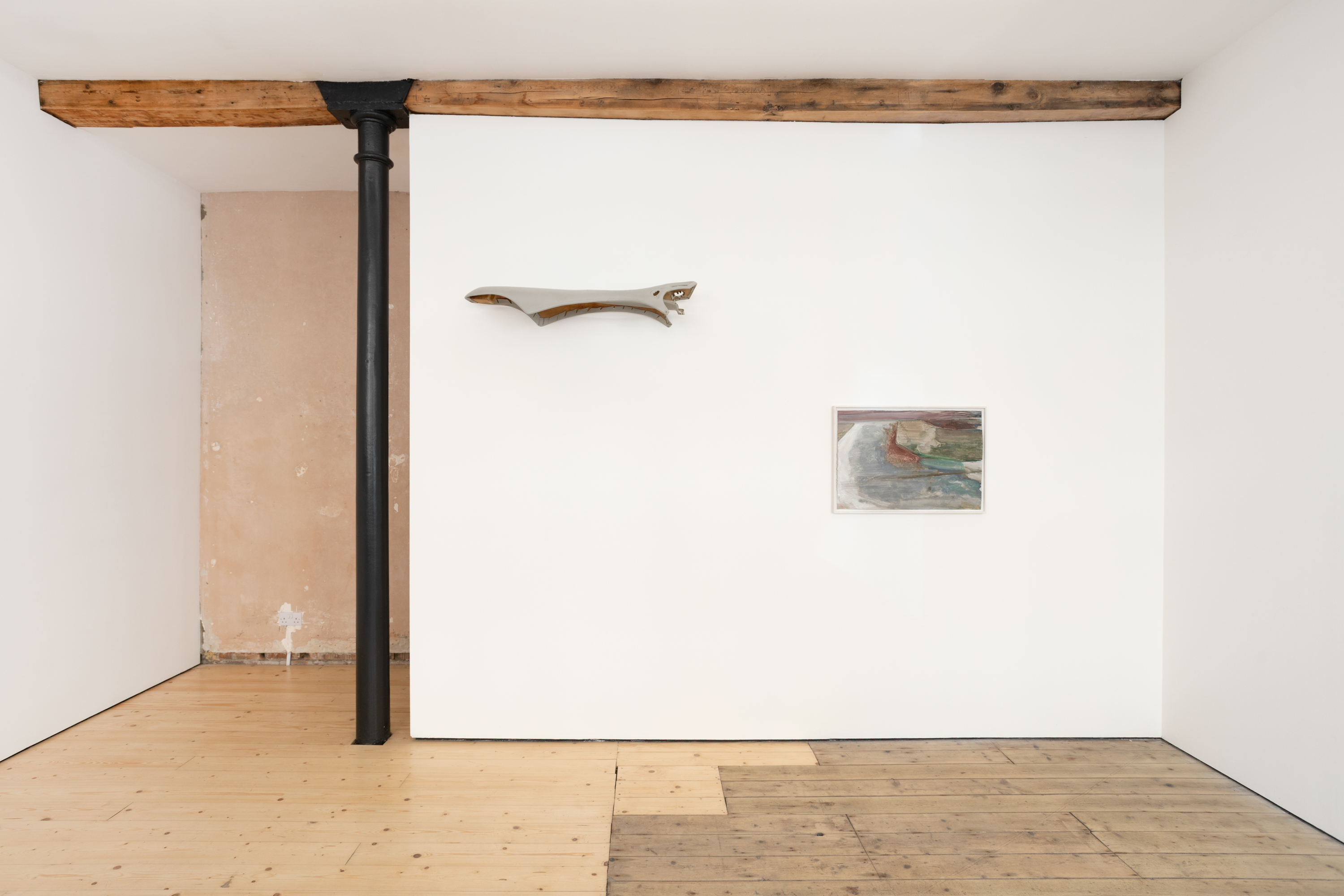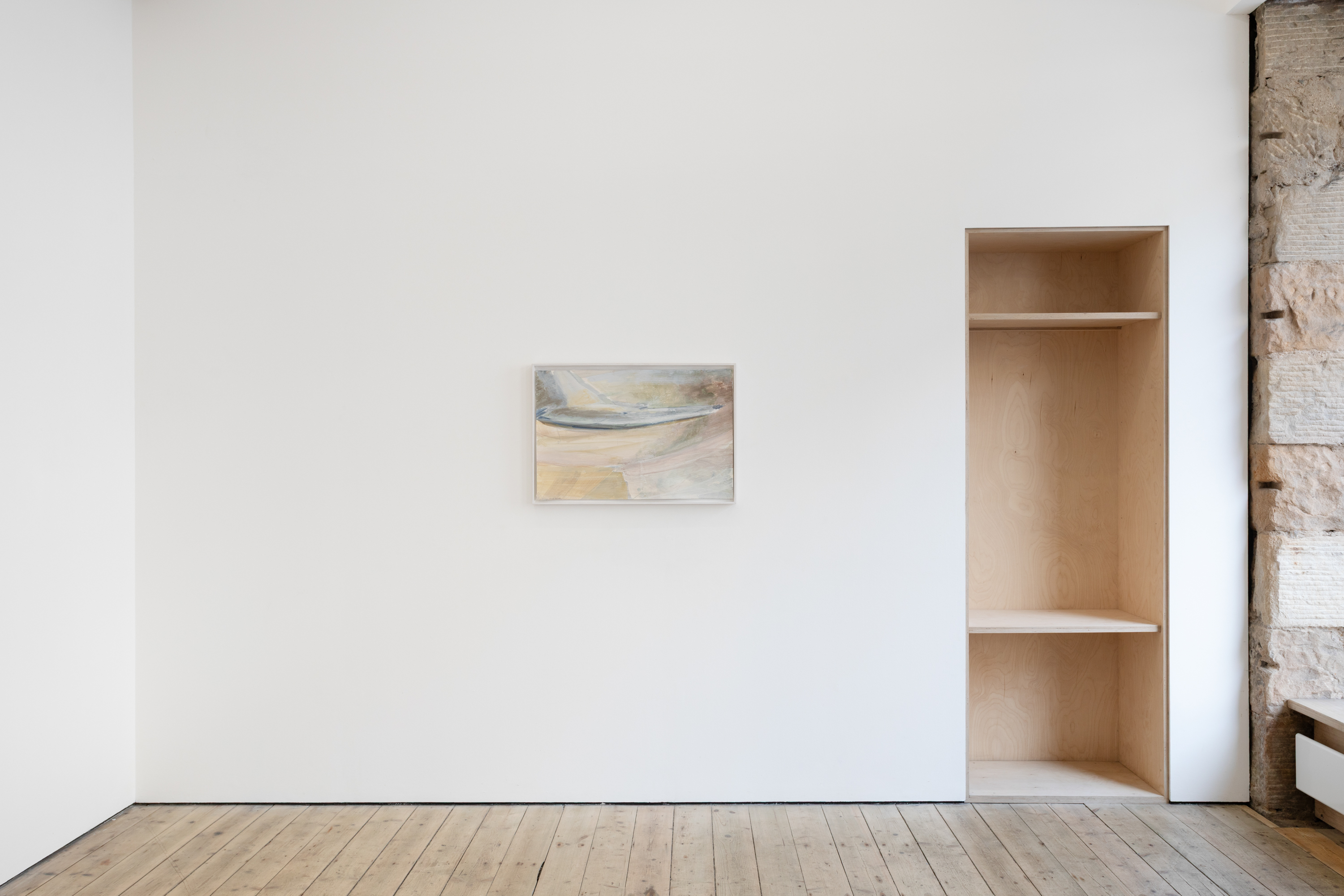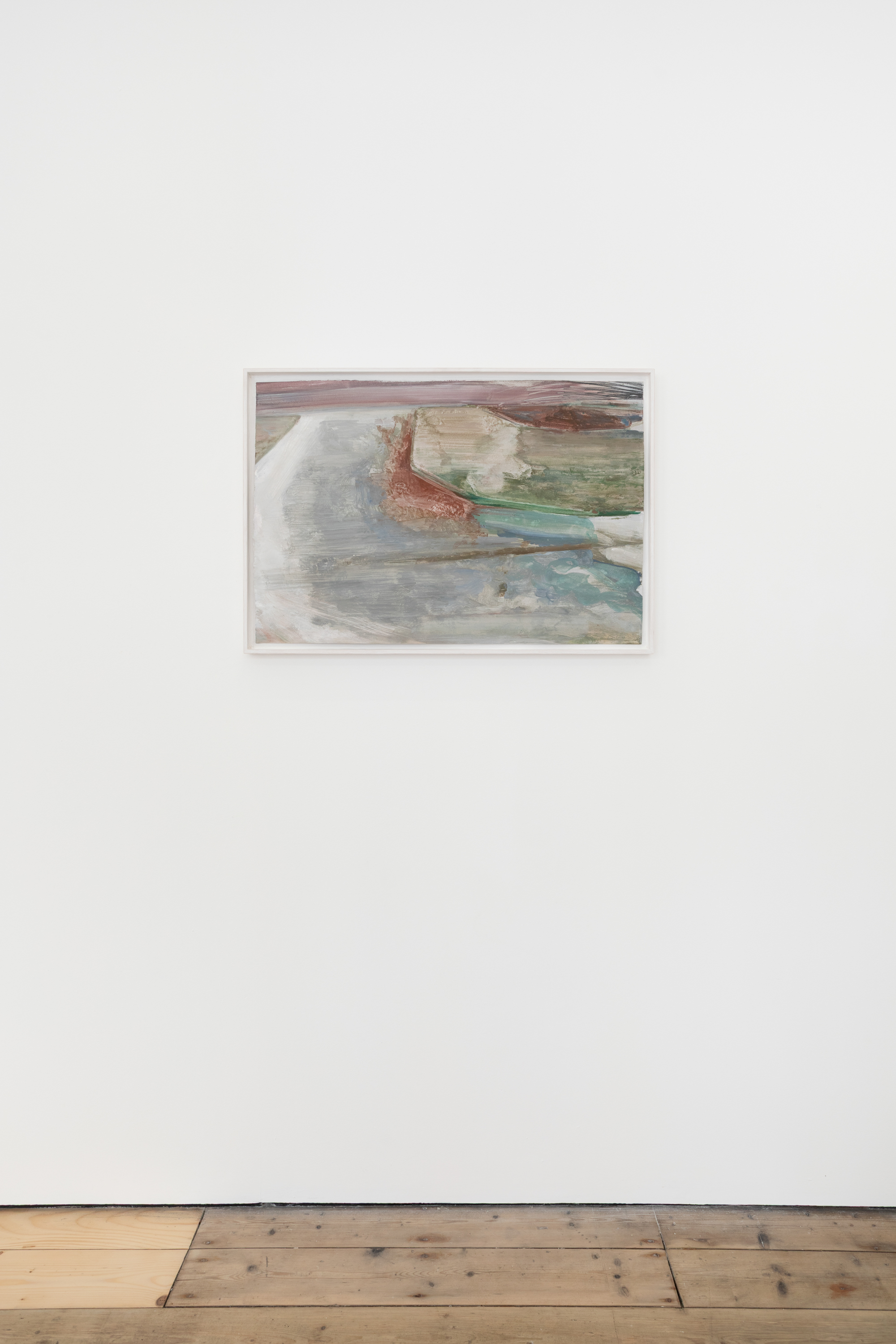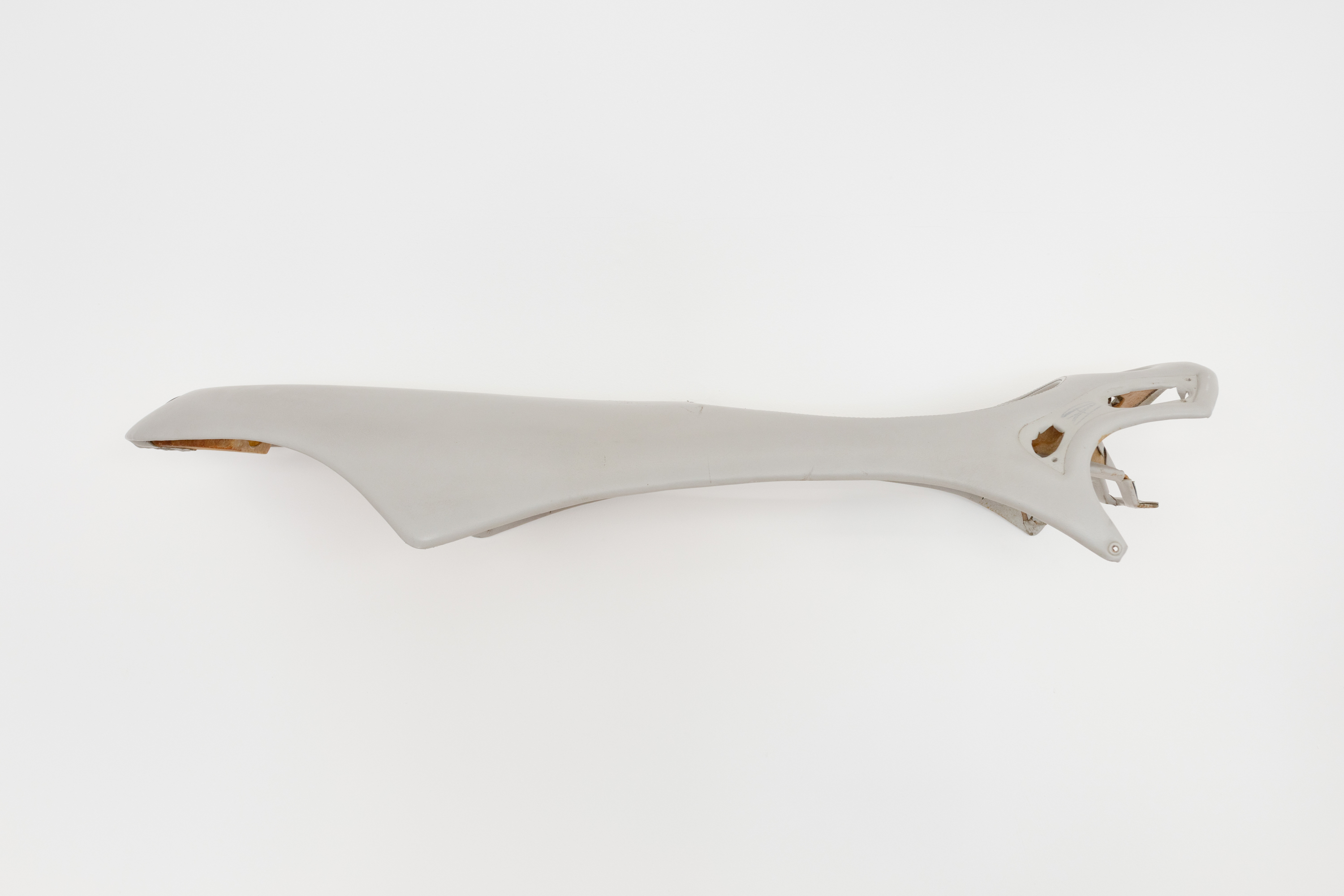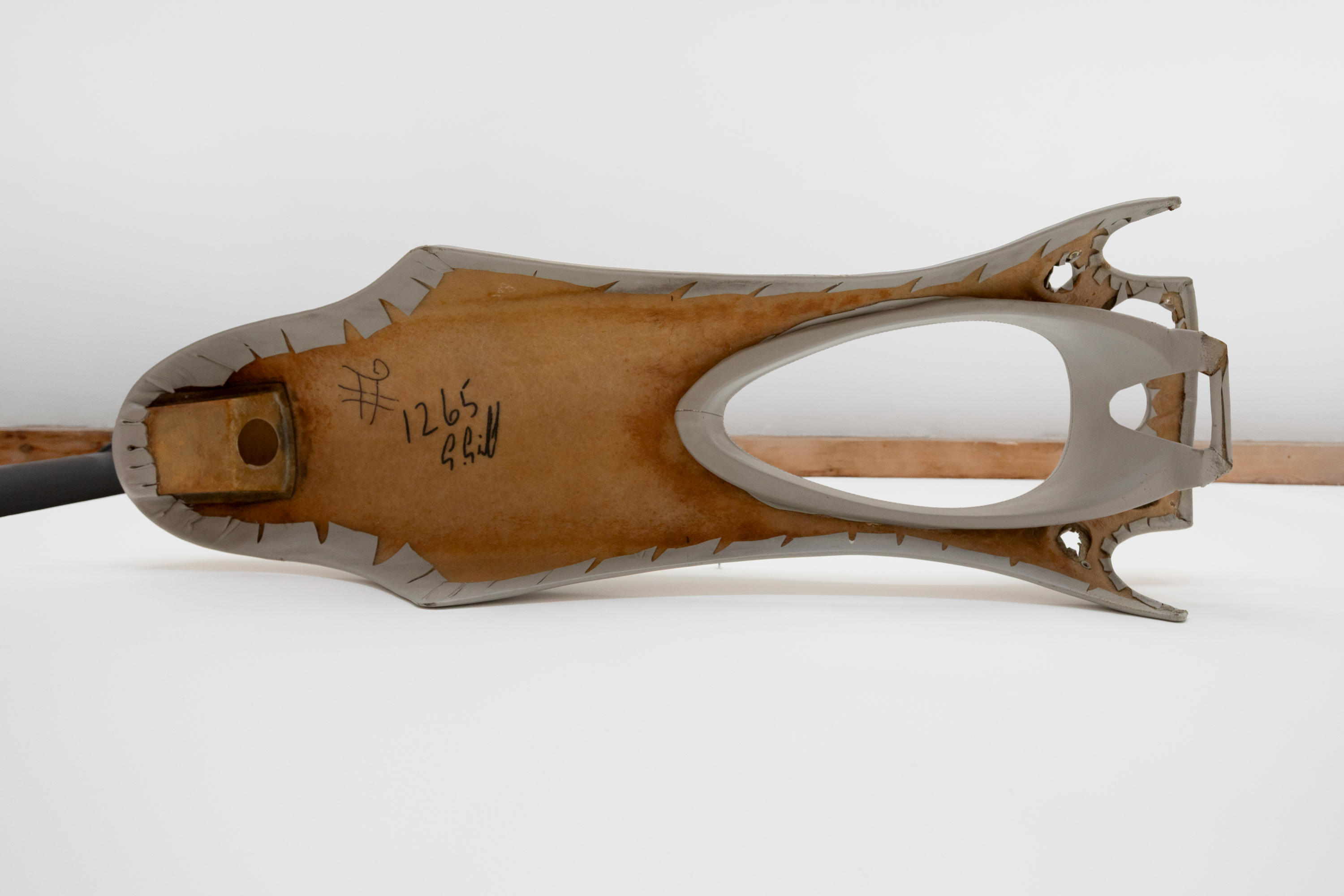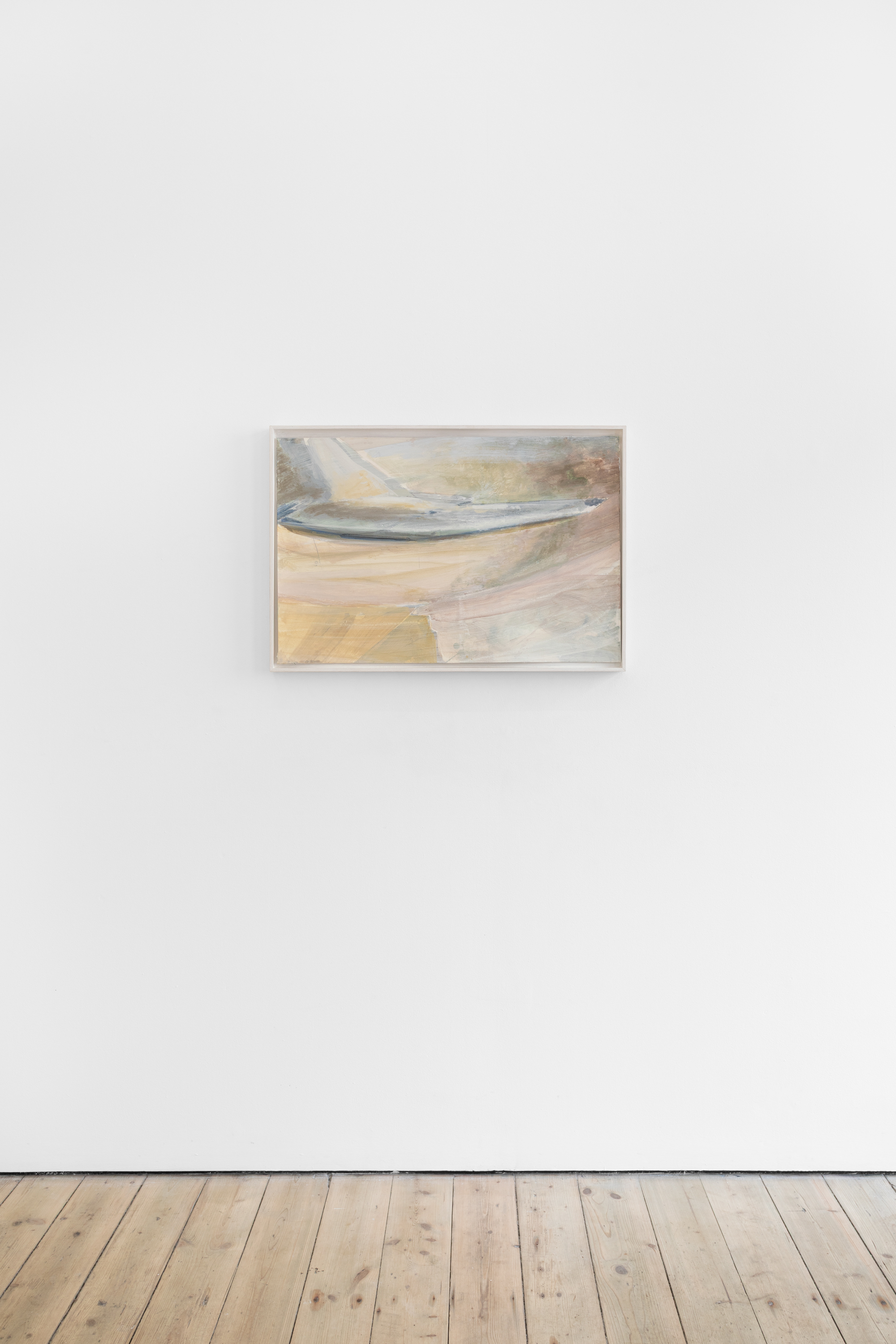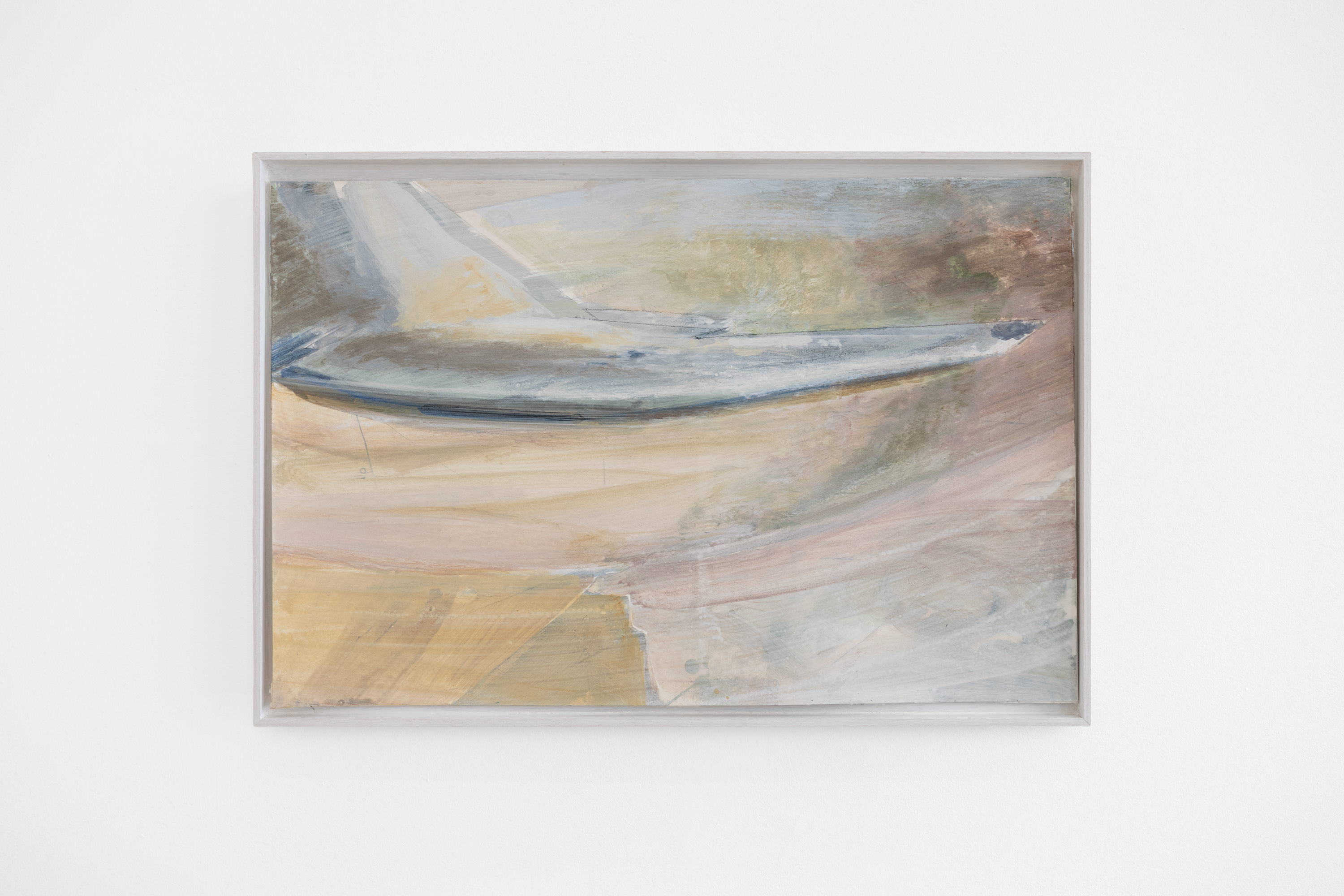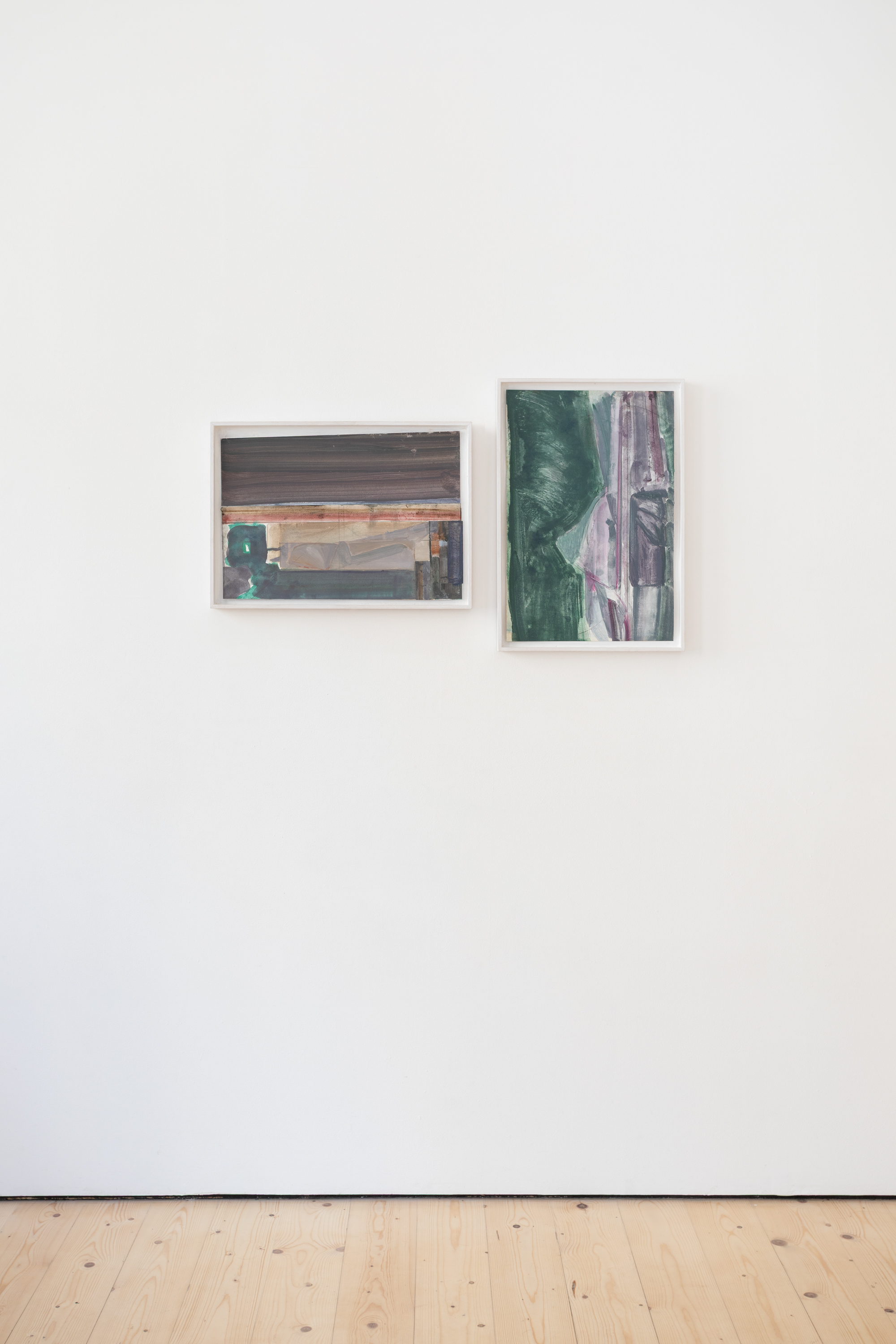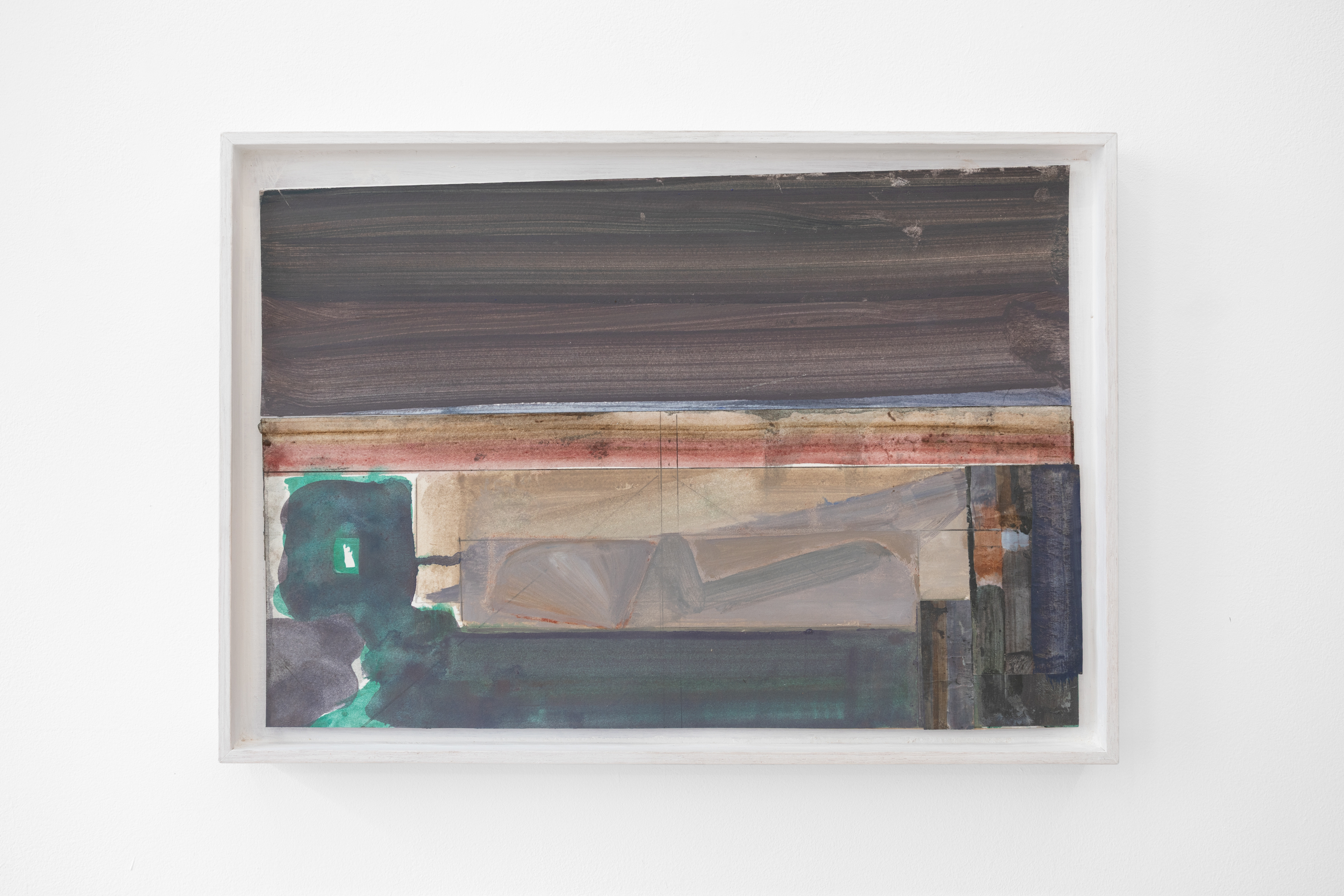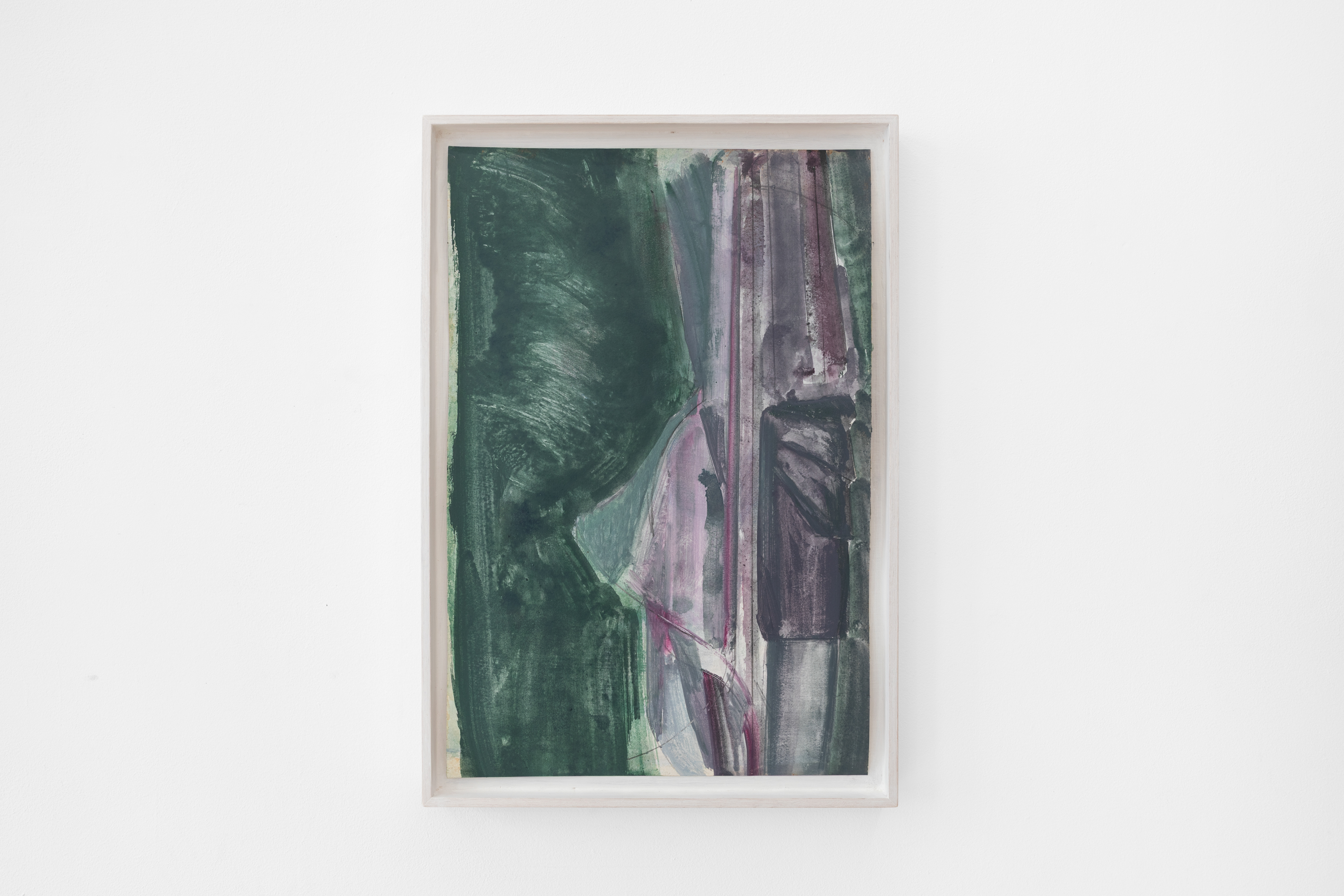Rhett Leinster’s paintings work with and against the affective qualities of particular motifs, always just pulling away from clarity and playing with legibility through colour, form and line. This marks a shift away from a prior concern with photographic imagery. His distorted motifs – wings, helmets, bunkers and cars – provide a starting point for a more expansive material exploration, while still alluding to their origins as complex, multifaceted containers. These containers serve a protective function yet act as a barrier to authentic connection to a body and person. They all in some way obscure and, as such, are ironic subjects for paintings.
The works are painted on mould-made paper using stable mediums such as casein and tempera with natural pigment. This choice of materials grounds their production in ecological awareness. Leinster’s sources too could be understood as being recycled rather than, say, quoted or sampled. They find a place in the world again, painted repeatedly, their topology shaped and repurposed in the studio. This lends them a shimmering, fugitive quality – with the artist lingering in inconsistencies and small shifts, their sources becoming largely untraceable, subsumed into the painted event. At the same time, they are wedded by a shared sensibility – there is no form but there is coherence.
The relative sparsity of his compositions and the potential for misidentification lends the work a haunted, anxious quality. It is this feeling that holds a mirror up to our strange, image-saturated moment. We may see aerial drone footage, a plane wing, the soft curves of a figure, in the brushed surfaces of these papers. The installation of the aerodynamic grey leather centre console of a TVR Tuscan MK1 2000, threatening and shark-like, also speaks to a kind of violence. This item was bought on a second-hand marketplace, chosen for it’s beguiling, deceptive form.
The palindromic title, ‘live not on evil’, is also ambiguous, hovering between linguistic play and archaic moralising. Its simplicity as a statement masks a great complexity of decisions and ruminations, an area the work lingers in, productively.
